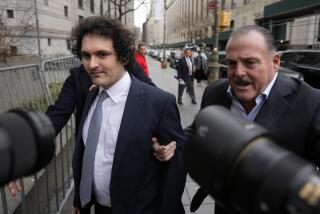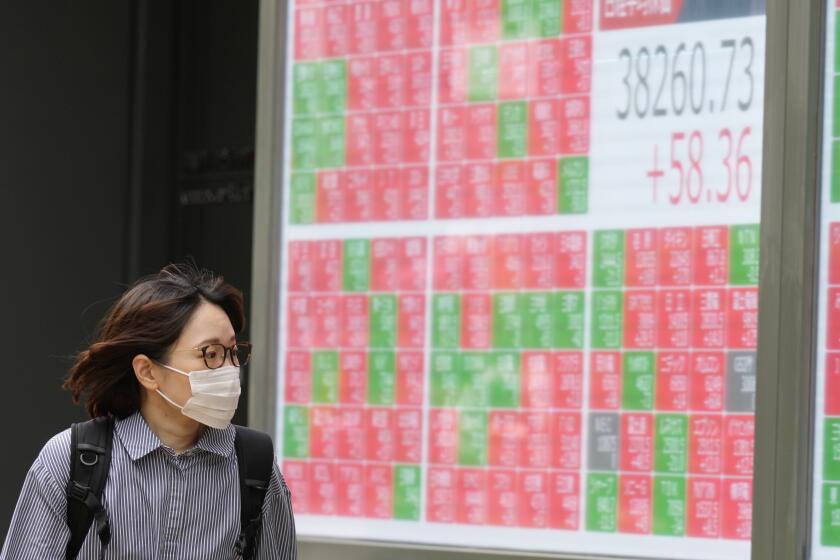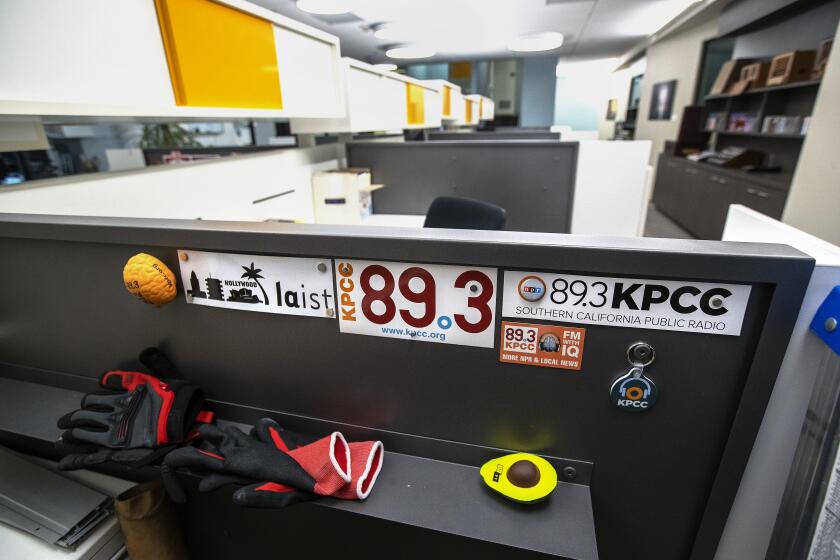Oil Price Decline Masks Other Trends : Economists Say Inflation May Be Heating Up Again
Americans may not have long to enjoy the falling prices that bolstered their buying power in recent months, for signs already point to inflation heating up, private economists say.
No one is predicting that inflation will return to the double-digit levels that battered the U.S. economy at the end of the 1970s. But some experts are forecasting that prices soon will be rising at an annual clip of 5%.
So far this year, consumers have been basking in the biggest price decline in 37 years. From February through April, prices tumbled at an annual rate of 4.3%, the biggest decline since early 1949.
The credit for this three-month spell of deflation goes largely to the sharp plunge in energy prices. Gasoline prices tumbled 26.5% during those months to levels last seen in mid-1979.
But oil prices, which dipped as low as $10 per barrel on the spot market, now have stabilized about $16 per barrel. That is still well below the $28-per-barrel price that prevailed only a short time ago, but many economists believe that the slide in energy prices is at an end.
Donald Ratajczak, director of the economic forecasting project at Georgia State University, predicted that gasoline prices at the pump will rise 5 to 7 cents a gallon in coming weeks as motorists take to the road for summer vacations.
4% Rise in Prices
Without the cushion of falling gasoline costs, consumer prices will start moving upward in the months ahead, analysts believe.
In April, if energy costs were excluded, prices actually rose at an annual rate of more than 4% due to increases in the costs of food, housing, clothing, entertainment and medical care.
“People hearing about the overall decline in prices have been lulled into contentment, believing that inflation is a problem of the past,” said Michael Evans, head of a Washington-based economic consulting firm. “They don’t realize that outside of energy, prices have been rising.”
The price declines that have occurred already are enough to keep inflation in the United States low for 1986. Some analysts predict that it will be 2.5% or less, the best performance in more than two decades.
Consumer prices rose 3.8% in 1985 and were 4% or slightly lower in each of the three previous years as well. Prices soared 13.3% in 1979 and 12.4% in 1980.
Many analysts believe that prices will be rising in the latter half of the year at a 5% annual rate.
For 1987, Ben Laden, chief economist for T. Rowe Price Associates of Baltimore, forecasts a price rise of 5%, the sharpest gain since 1981, when prices climbed 8.9%. “Falling energy prices are dominant right now, but that passes through rather quickly,” he said. “Then the big story will be the decline in the dollar.”
For the past several years, inflation in the service sector of the economy has been offset by declines in the cost of manufactured goods as domestic producers were forced to keep the lid on prices or risk losing even more market share to foreign competitors.
Consumers reaped a bonanza in cheaper costs for everything from automobiles to television sets, but the country’s trade deficit soared.
In an effort to dampen protectionist cries in Congress, the Reagan Administration last fall joined with other industrial countries to drive down the value of the dollar.
The dollar has now declined in value by about 30%. Some economists say that each 10% drop in the dollar’s value will add 1.5 percentage points to the inflation rate down the road.
But while a weaker dollar is likely to drive inflation higher, its impact could be offset to some degree by continued low wage increases, analysts believe.
Average hourly earnings have risen by only 2.3% in the past year. Many analysts are predicting that wage gains for the rest of 1986 will not advance further because industrial production rates are still at low levels.






